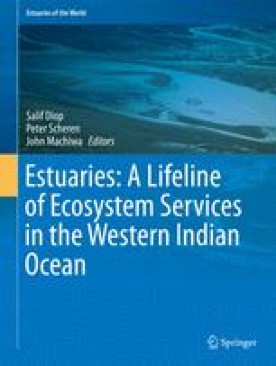
Remote Sens Environ 16:165–173īrown T, Schneider H, Harper D (1996) Multi-scale estimates of erosion and sediment yields in the Upper Tana Basin, Kenya. Laboratory of Aquatic Ecology, Catholic University, 195pīrakel WH (1984) Seasonal dynamics of suspended sediment plumes from the Tana and Sabaki Rivers, Kenya: analysis of Landsat Imagery. 2, Program for the sustainable management of Cahora Bassa Dam and the Lower Zambezi Valley, 159pīlom J, Hagen H van der, Hove E van, Katwijk M van, Loon R van, Meier R (1985) Decline of Malindi-Watamu Reef complex. Department of Civil Engineering, University of Stellenbosch, South Africa, 18pīeilfuss R, dos Santos D (2001) Patterns of hydrological change in the Zambezi Delta, Mozambique. Greenber A, Clescer LS, Eaton AD (eds) American Public Health Association, American Water Works Association, Water Environmentīasson G (2013) Hydropower dams and fluvial morphological impacts – an African perspective.
SABAKI ESTUARY SERIES
In: Hoorweg J (1998) (ed) Dunes, groundwater, mangroves and birdlife in Coastal Kenya, Coastal Ecology Series no 4, Moi University, pp 17-39ĪPHA (1992) Standard methods for the examination of water and wastewater-18th Edition. KeywordsĪbuodha JOZ (1998) Geology, geomorphology, oceanography and meteorology of Malindi Bay. The paper puts forward recommendations for sustainable management of the two estuaries in Kenya. The study notes that the proposed large-scale hydropower and irrigation projects in the Athi-Sabaki and Tana river basins have the potential of causing massive degradation of the two estuaries. In the Tana delta system, the impacts include high turbidity, alteration of the morphology of the delta, degradation of the mangrove forests, coastal erosion and sea water intrusion. The major impacts in both estuaries include high turbidity, heavy sedimentation, changes in beach morphology and degradation of the marine ecosystems such as the coral reefs and seagrass beds.

The changes in freshwater and sediment supply into the two estuaries were attributed to landuse change, damming and climatic variability. The shallow Sabaki estuary experiences greater rates of water and sediment exchange as compared to the relatively deeper Tana estuary. However, the cohesive clay sediments are trapped within the estuaries in mangrove forest wetlands and in sheltered intertidal areas that are now occupied by mudflats. This has resulted in net export of sediments out of the two estuaries. The tidal asymmetry in the two estuaries is characterized by ebb tidal flow dominance due to presence of mangrove forests, wide intertidal areas and freshwater input. This has led to deepening of the estuary channels with the result that tidal wave penetrates much deeper into the estuary and seawater intrudes up to 10 km inside the estuary. On the other hand, there has been a substantial reduction in both freshwater input and sediment supply into the Tana Delta. The shallow nature of the Sabaki estuary ensures reduced penetration of the semi-diurnal tidal wave into the estuary and seawater intrusion is restricted to 2.5 km of the estuary. In the much smaller Sabaki estuary, there has been a reduction in freshwater input and an increase in sediment supply leading to heavy accretion. The study shows that the hydrologic dynamics controlling water circulation including the trapping and exchange of terrigenous sediments in the two estuaries is a function of the river discharge and tidal forcing.


The two estuaries are important for biodiversity conservation, sustainability of socio-economic livelihoods and provision of global environmental benefits. The horizontal and vertical distributions of tidal current velocities, salinity and total suspended sediment concentrations (TSSC) within the estuaries enabled determination of the degree of stratification and the extent to which mixing of seawater and freshwater leads to the formation of the maximum turbidity zone (TMZ) in the two estuaries.

The study involved the determination of river freshwater and sediment fluxes, as well as water exchange and sediment fluxes at the mouths of the two estuaries. This study is focused on the determination of the extent to which changes in river freshwater and sediment input affects the sustainability of the Tana Delta and Sabaki estuaries in Kenya.


 0 kommentar(er)
0 kommentar(er)
